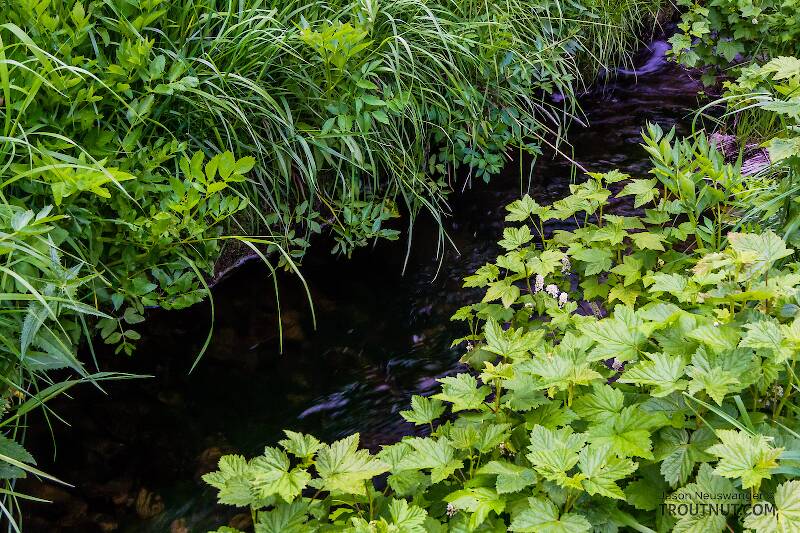
Blue-winged Olives
Baetis
Tiny Baetis mayflies are perhaps the most commonly encountered and imitated by anglers on all American trout streams due to their great abundance, widespread distribution, and trout-friendly emergence habits.


Mayfly Species Eurylophella bicolor (Chocolate Duns)
Species Range
Physical description
Most physical descriptions on Troutnut are direct or slightly edited quotes from the original scientific sources describing or updating the species, although there may be errors in copying them to this website. Such descriptions aren't always definitive, because species often turn out to be more variable than the original describers observed. In some cases, only a single specimen was described! However, they are useful starting points.
Male Spinner
Wing length: 6-7 mm
A member of the bicolor (now a synonym of Eurylophella bicolor) group; imago paler than other related species.
Head of male light brown. Thorax dark reddish brown. Legs pale yellow; coxae tinged with brown, and with black spots. Tinges of red may be present near the apex of each femur. Wings hyaline; venation hyaline. Stigmatic cross veins anastomosed. Abdominal tergites pale reddish brown with a distinct tinge of olive-brown. Blackish streaks near the pleural fold, and in some specimens a paler mid-dorsal line margined by interrupted blackish submedian streaks. Ventrally pale, the basal sternites slightly tinged with brown. Tracheae appear as fine dark lines. Tails pale yellowish white, the joinings purplish red.
Female Spinner
Head of female pale yellow.
Nymph
Nymph variable in both size and color. The occipital tubercles are wanting in the male nymph, and much reduced in the female. The rows of dorsal spines are distinctly divergent toward the rear, with a rather abrupt increase in the space between them on tergite 5. The spines on tergites 1-3 are short and chunky, and barely tapering. Postero-lateral spines on segments 2 and 3 are very poorly developed; these spines are well developed on the posterior segments, tipped with black and gracefully curved. The margins are set with short spinules, between which are long hairs. Color very variable, as is also the size. Pale specimens are strikingly marked with dark brown on the thorax and the posterior abdominal tergites. Legs distinctly banded. An oval patch is often present near the middle of the operculum. The usual four dots in a curved row, and the dark lateral dashes, are present in most specimens. Tails brownish, with indications of pale cross bands. Fore leg as in fig. 62e.
Start a Discussion of Eurylophella bicolor
References
- Knopp, Malcolm and Robert Cormier. 1997. Mayflies: An Angler's Study of Trout Water Ephemeroptera . The Lyons Press.
- Needham, James G., Jay R. Traver, and Yin-Chi Hsu. 1935. The Biology of Mayflies. Comstock Publishing Company, Inc.
Mayfly Species Eurylophella bicolor (Chocolate Duns)
Species Range
Common Names
Resources
- NatureServe
- Integrated Taxonomic Information System
- Global Biodiversity Information Facility
- Described by Clemens (1913)

